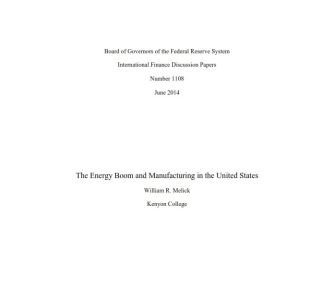Melden Sie sich bei getAbstract an, um die Zusammenfassung zu erhalten.

Melden Sie sich bei getAbstract an, um die Zusammenfassung zu erhalten.
William R. Melick
The Energy Boom and Manufacturing in the US
Federal Reserve Board, 2014
Was ist drin?
US energy costs have dropped, but how much has that helped the economy?
Recommendation
Economic shocks can be both good and bad. While negative jolts usually get most of the attention, positive shocks can be just as critical to an economy. Since 2006, the United States’ positive shock has been the rocketing supply of natural gas and its plummeting cost. Economics professor William R. Melick has gleaned data to address the questions of how the economy of “Saudi America” is adjusting to lower energy costs and whether cheap natural gas is paving the way for another golden age of US manufacturing. getAbstract recommends his study of the broad economic effects of low energy prices on American investment, jobs, imports and exports particularly to manufacturing executives and energy specialists.
Summary
About the Author
William R. Melick is a professor of economics at Kenyon College in Ohio.






















Comment on this summary